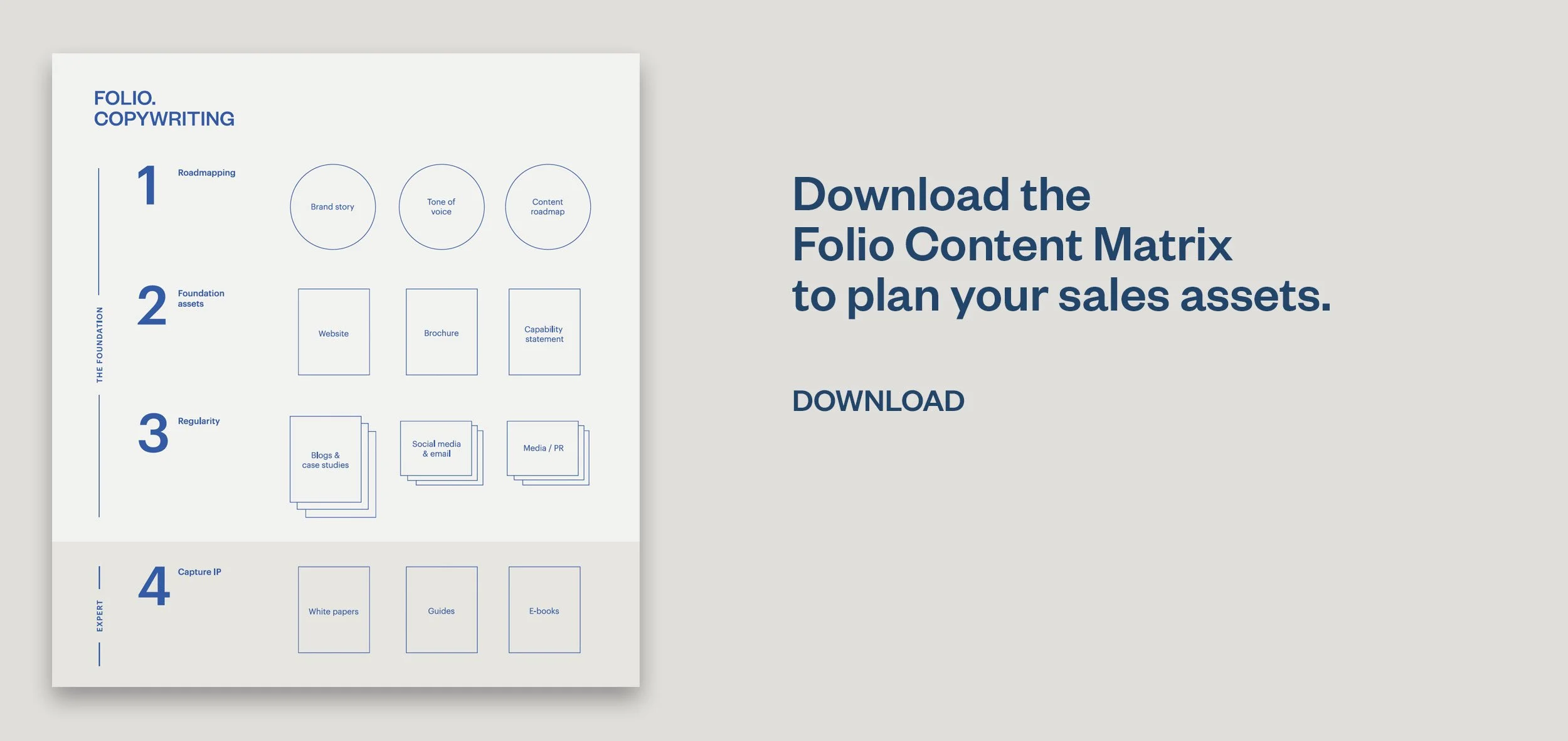Upscaling the classic capability statement
Learn how to create a more powerful capability statement to express your true worth and stop being bypassed for companies who explain their value better.
Capability Statement, Services Guide, Company Profile or Brochure – these are all terms used to describe the same document: an 8- to 16-page PDF or printed asset that answers who you are, what you do, why you do it, how you do it and your track record. They are shared with new and potential customers, with some pages used in RFP and tender submissions.
Shared as a download on your website, attached to a cold outreach email, printed and distributed at an event, these digital or printed assets have longevity.
They are more tangible than other marketing collateral – for example, it’s hard to print a website without losing all the design and formatting; business cards provide minimal information; and product samples are thrown away after a project.
A PDF, by contrast, is easily printed and retains its design format, and a physical brochure can look truly stunning.
They are tangible and easy to share at a sales meeting, event and conference. Customers keep them on file for future reference – in fact, I believe a capability statement is a better investment than a business card. Professionally produced marketing collateral makes your work more tangible and brings your value to life.
The barriers to creating GREAT capability statements
The first problem I see with existing documents is they are written and designed in-house. This is fine if you have a copywriter and graphic designer on staff, but most companies don’t.
The other common mistake I see are profiles or capability statements written in sales-speak, which makes them feel like they are selling rather than helping. B2B customers get uncomfortable in their seat when being oversold.
Sure, you need to beat your own drum, and express energy and confidence, but there’s a fine line between confident statements and hyperbole. Every bold claim needs to be backed up by evidence and proof, so the art is balancing tone of voice, word choice and information.
Consider that if your capability statement has been written and designed in-house, it is unlikely to be as clear and powerful as one created professionally by a B2B copywriter and professional graphic designer.
Printed assets bring intangibles to life
I work mostly with consultancies across the technology, manufacturing, construction and creative industries – high-value products and services where the decision to purchase is made slowly and carefully after a lot of research.
When there is a large services component to the delivery – think of automation engineering or management consulting combined with IT solutions – the value offer is even harder to communicate. Your client can’t see or test the service, so you have to tell a story, share case studies, data, testimonials, infographics and, where possible, images.
Here's the thing, humans find it very hard to connect with things that are intangible. But as soon as we move from the intangible to the tangible with a physical, printed brochure, an offer can suddenly come to life.
Well thought through capability statements and company profiles communicate credibility and authority. They help your prospects ‘see’ and recognise the value of what you do. The right words, insights and ideas develop and expand your value proposition and position you strongly in the mind of your prospects.
The other reason to create a quality capability statement is it forces you to slow down and unpack your brand story:
what you do
who you are – your business and people
what problems you solve
how you solve them well
testimonials and case studies that prove results
You can produce one brochure per sector to make them more targeted. For example, if you’re an architect, create a brochure for each of the education, commercial and residential sectors. And because content is modular, you can reuse content in proposals and RFP submissions.
These assets will stay around your clients’ and prospects’ offices a lot longer as they move through the decision-making journey.





